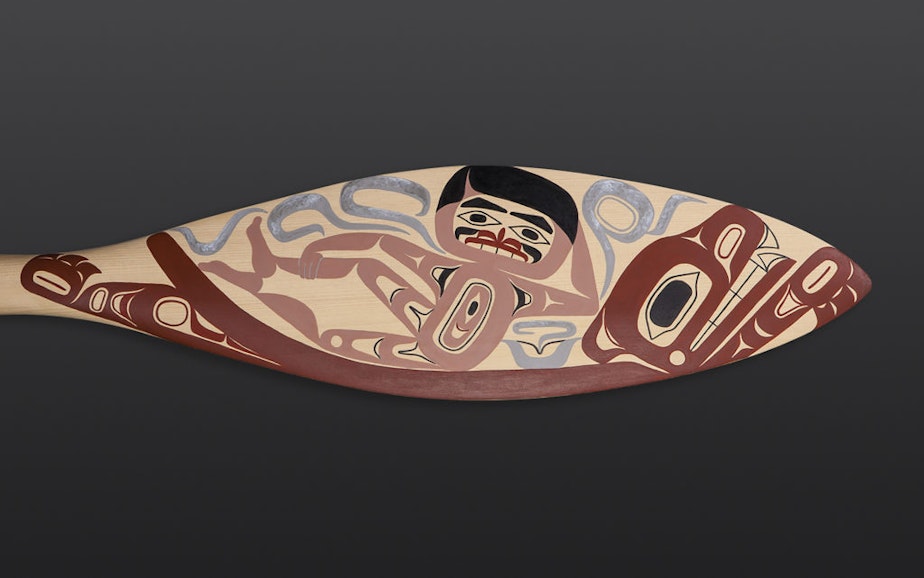How naked Burt Reynolds ended up in a Native art gallery in Seattle

Jolene Haas, daughter of Duwamish Tribe chairwoman Cecile Hansen, was walking through the Steinbrueck Native Gallery in downtown Seattle this past May when she spotted an interesting looking paddle tucked away in the corner.
Haas had gone to the gallery looking for a gift. But she quickly realized the paddle wasn't quite what she thought.
"I was informed that if I looked closely I would see the picture," Haas told KUOW. "And if it was for someone as an honoring it would not be appropriate."
The cedar paddle depicted the iconic image of a naked Burt Reynolds on a bearskin rug. It was made by Tlingit artist Alison Marks.
"'That makes sense,' [I thought] as I laughed hysterically," Haas said. "I think most of our moms had that poster in the '80s."
Marks, whose work was recently shown at a major solo exhibit at the Frye Art Museum last year, told KUOW that her depiction of Reynolds was an answer to the male gaze found in many contemporary pieces in the Northwest Coast art market.
"Many of the male artists working today are kind and gifted and admirable people, but there are these very detailed anatomical works on the market representing the female form," Marks said.

"And these very detailed images are created under the pretense of honoring women," Marks continued. "It reminds me that at the time of contact and pre-contact with the Western world, modesty was considered very honorable."
In Marks' hometown of Yakutat, Alaska, women's traditional dress included hide dresses that covered women's necks down to their ankles, Marks said.
Marks chose to depict Reynolds because the image was iconic and he knowingly objectified himself.
"And," she said, "I chose that image because it's so cheeky, in every sense of the word."
Reynolds died at the age of 82 on Thursday. He was remembered as the charming star of Westerns and a canoe paddler in "Deliverance" — but also as a man whose nudity in a 1972 Cosmopolitan centerfold once scandalized American pop culture.
Soon, Marks' "Burt Reynolds" will be leaving Seattle for a New Hampshire museum to be part of a show about the role of humor in Native art.
Jami Powell, associate curator of Native American art at Dartmouth College's Hood Museum and a citizen of the Osage Nation, said she was immediately drawn to Marks' paddle.
"I thought it was hilarious," she said.
Humor, Powell added, is a central strategy for decolonization in everyday life and in art.
But for Marks, humor is also a strategy to lure in the viewer.
"Humor," Marks said, is often a gateway "to a deeper aspect of the culture."
Correction, 5:24 p.m. 9/7/18: The original version of this piece misstated the location of Steinbrueck Native Gallery.




